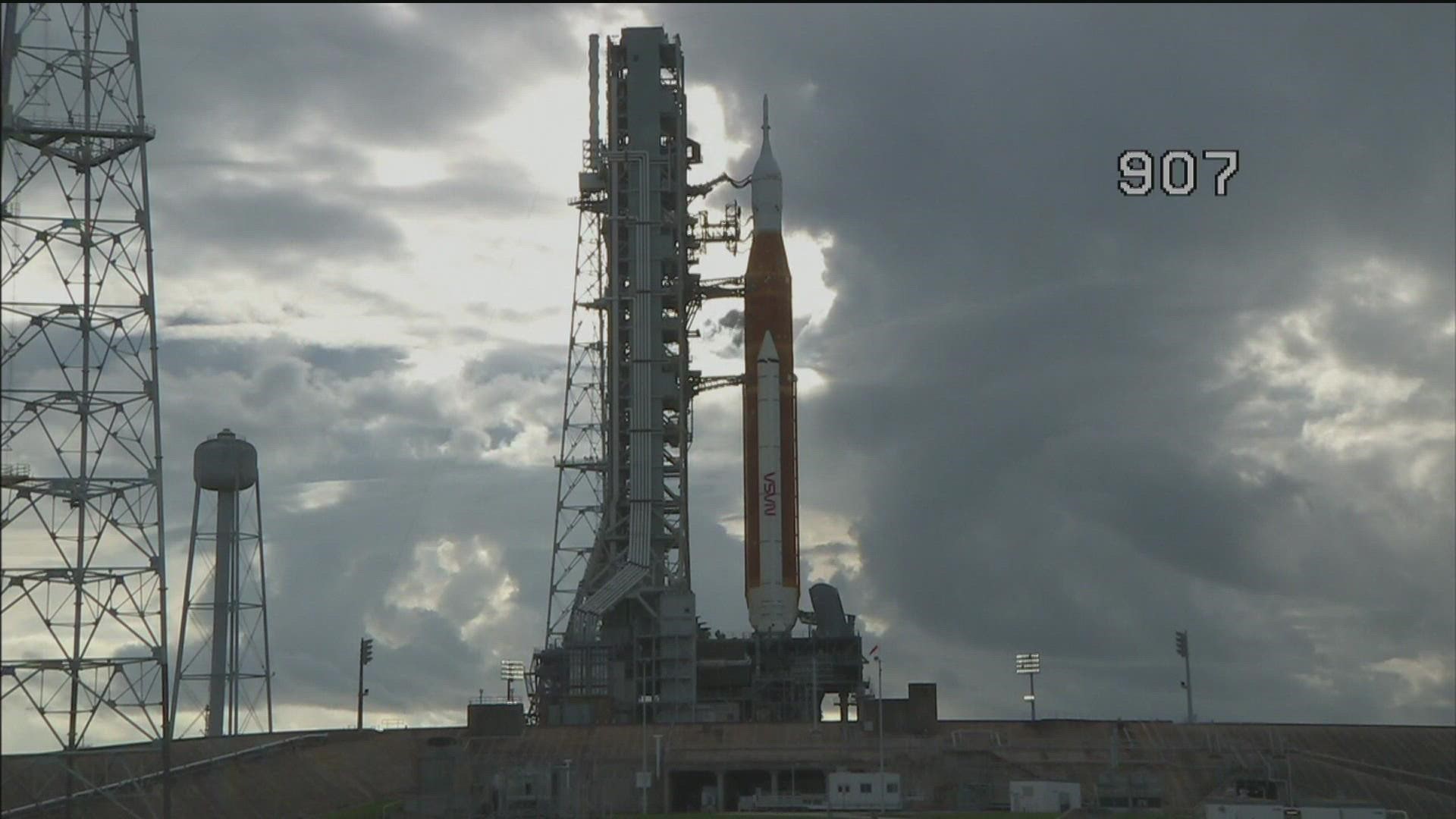SAN DIEGO — Update: NASA has scrubbed the Monday launch of its Artemis rocket, citing an engine bleed that couldn't be remedied within the mission's launch window.
The scrub was called at 5:35 a.m. PST, five minutes into the two-hour launch window. Before the engine bleed and fuel leaks during final liftoff preparations threatened to postpone the launch. The next launch is set for Friday, September 2.
Original story below:
Excitement is growing over the anticipation for NASA’s Artemis I launch on Monday from the Kennedy Space Center in Cape Canaveral, Florida. It will be 50 years since humankind traveled to the moon during the last Apollo 17 mission.
“We’re very excited and we can feel the excitement mounting,” said Kate Rubins, a candidate for a future Artemis mission. “From an engineering perspective, one of our main objectives is to look at the heat shield. In order to get the heat shield at this 5,000-degree heating and check out all of our objectives around the moon, we need to do this test launch. We’re looking for things like the loading to go out, the launch, and then our eyes are really on re-entry for the heat shield and the capsule recovery.”
Standing tall at 322 feet, the Artemis I rocket is the most powerful ever built by NASA. Once in space, the Orion module will detach and travel to the moon. Its orbit will take it about 62 miles above the lunar surface before it continues about 40,000 miles beyond the moon.
“Fifty years ago, we were on the moon, so this is absolutely huge for our nation but it’s huge for the world. It’s huge for deep space exploration,” said Jim Kidrick, president and CEO of the San Diego Air & Space Museum.
Artemis I is the first of three planned missions. In 2024, Artemis II is expected to travel a similar route, but manned with a crew.
“The primary goals for Artemis I are to demonstrate Orion’s systems in a spaceflight environment and ensure a safe re-entry, descent, splashdown, and recovery prior to the first flight with crew on Artemis II,” NASA said.
Sometime this decade, Artemis III will embark on another manned mission that will land on the moon’s surface and sustain a presence there.
Different from Apollo missions of the past, the Artemis missions are all in preparation for deeper space exploration to eventually land on other planets like Mars.
“We’ve got to ensure that we can go to and from the moon, that we can live on the moon because if we can live on the moon, we can most likely live on Mars,” said Kidrick. “Then the challenge is getting to Mars because it’s a much longer mission, you know, it’s water, it’s food, it’s all those things that human beings need to survive a long trip.”
The mission will last 42 days, 3 hours and 20 minutes with its “splashdown” set for Oct. 10 off the coast of San Diego.
“It’s an exciting time,” said Kidrick. “For the next 40 years, standby, hold on because those next greatest generations are going to get to do some great stuff.”
The Artemis I rocket is set to launch early Monday morning at 5:33 a.m. Pacific Standard Time.
WATCH RELATED: Anticipation growing over Artemis I rocket launch to the moon (Aug. 28, 2022)
WATCH RELATED: Artemis I | NASA's new chapter in space (Aug. 2022).

